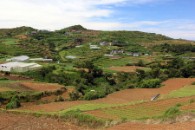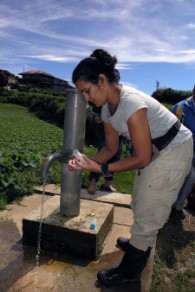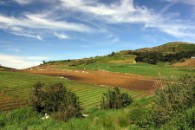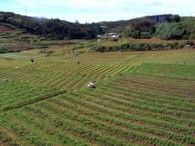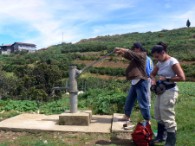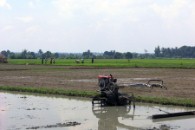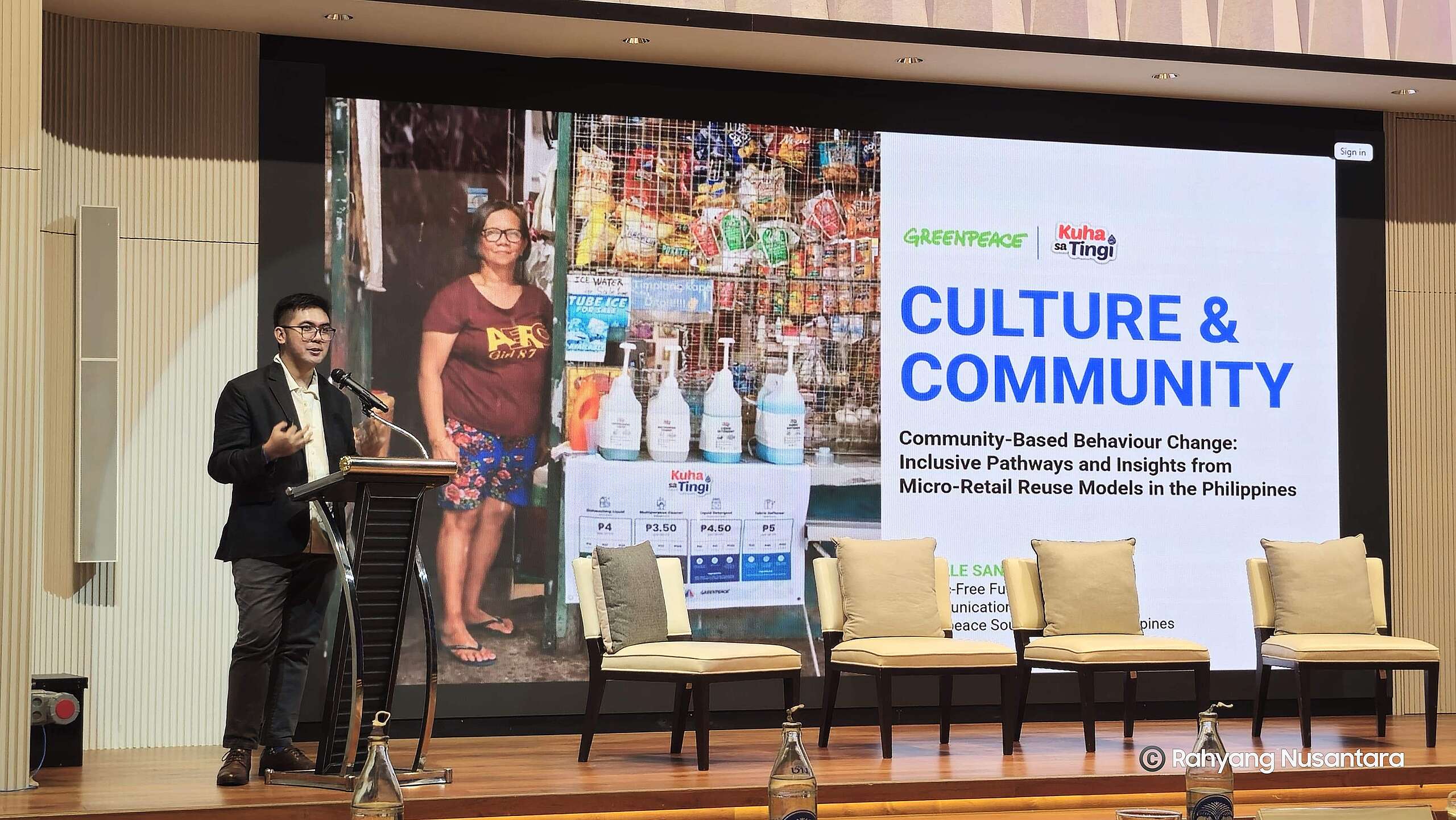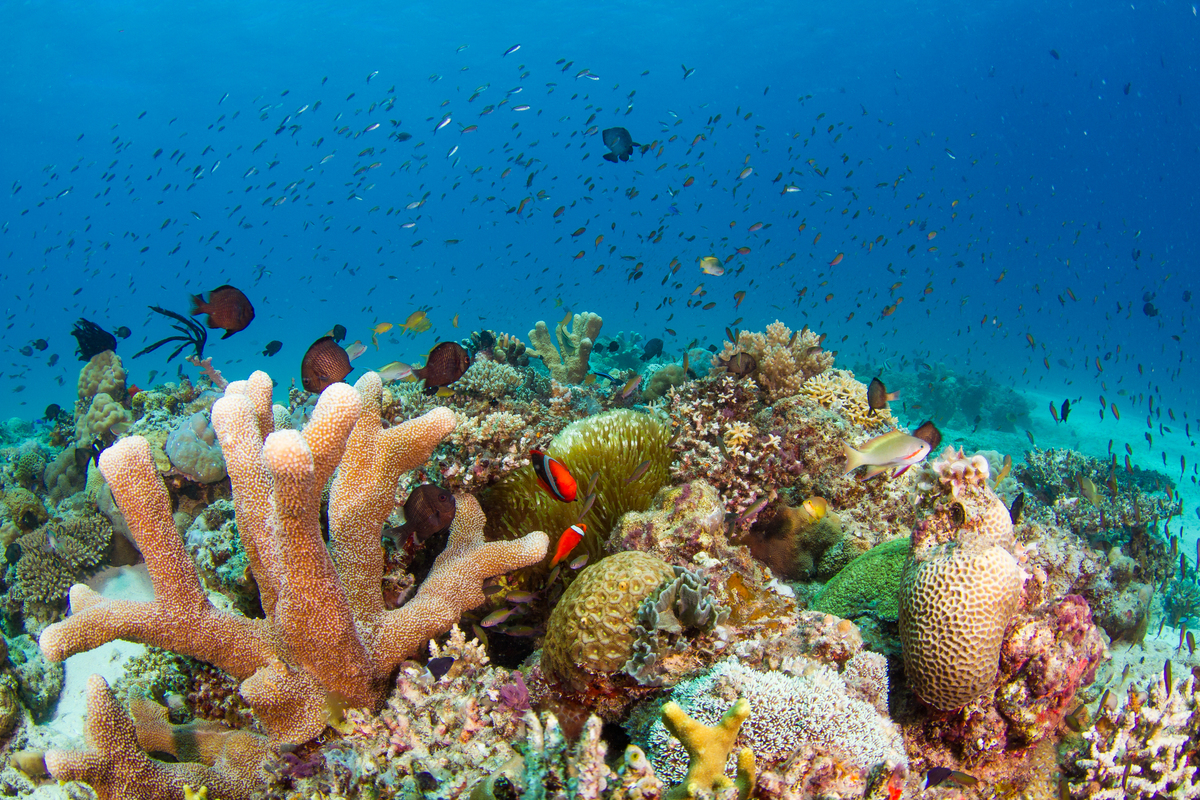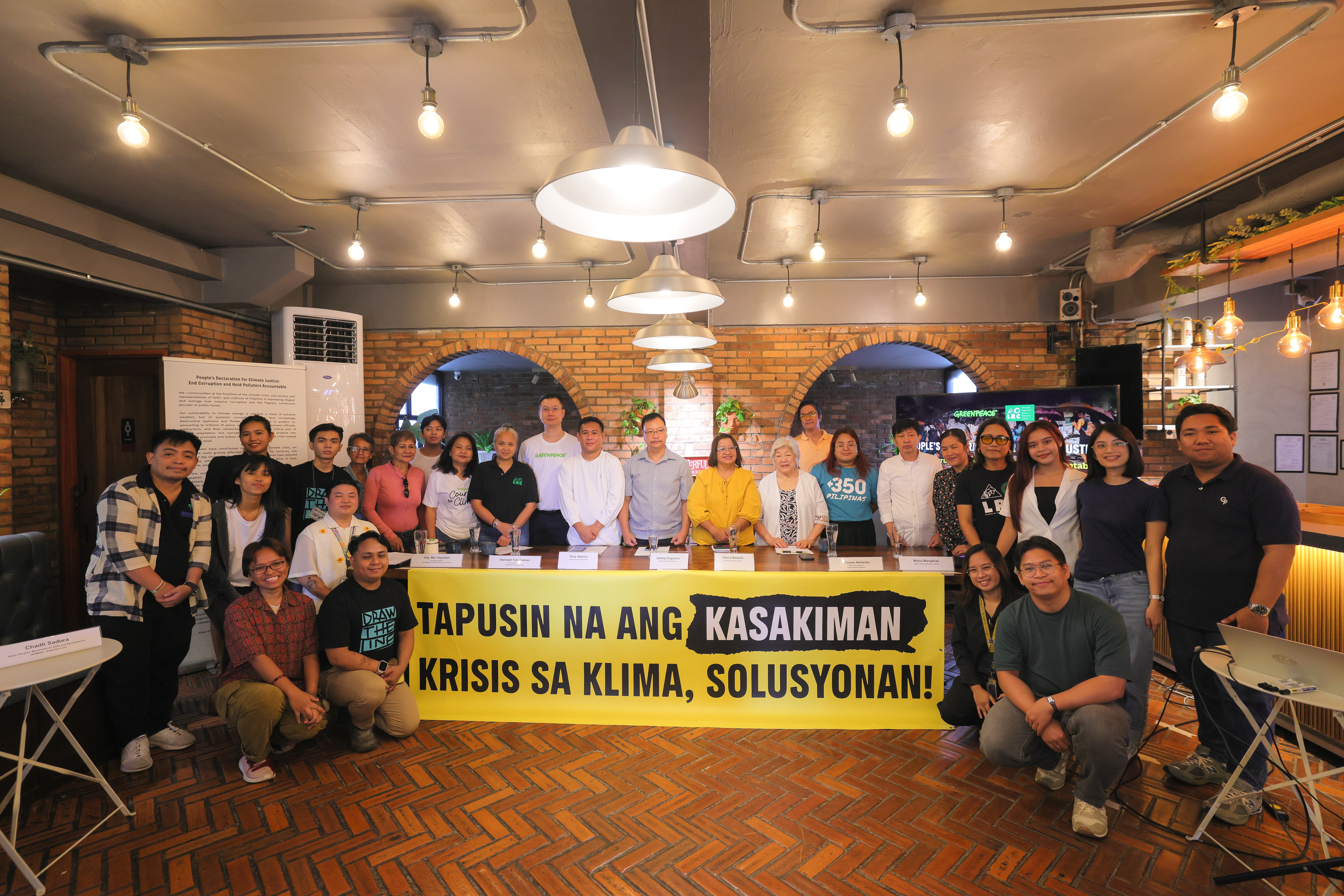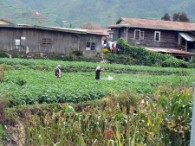
Farmers spray chemicals on crops in Barangay Loo, Buguias, Benguet Province.
The study shows that drinking water from 30% of all groundwater
wells sampled in both countries showed nitrates levels above the
World Heath Organization safety limit of 50 mg l-1 of nitrate
(NO3-). This nitrate pollution was highest in the most intensive
crops, with nitrate levels 3 times the WHO safety limit (>150
mg l-1) in asparagus farms in Kanchanaburi, Thailand. Groundwater
wells in vegetable farming areas in Benguet, Philippines were
also polluted with nitrates levels above WHO limits.
“Greenpeace has been sending out warning signals that the
quality of freshwater sources in both the Philippines and
Thailand is declining, and this study is yet another shocking
example of how water protection measures are inadequate. The
nitrates pollution that we discovered in farming areas is
particularly worrisome–communities think that the water they
drink everyday is clean because physically, it doesn’t smell bad
or look bad. But it is actually laced with nitrates from
fertilizers which people don’t normally associate with
pollution,” said Greenpeace Campaigner Daniel Ocampo.
In the Philippines, the Greenpeace Water Patrol
investigation looked at crops and farming practices in key
agricultural areas, Benguet and Bulacan provinces, surveying and
testing nitrate levels in water from wells and streams around
farms, and interviewing farmers and townsfolk. Five out of the 18
artesian wells in Benguet and Bulacan contained nitrates levels
well above the WHO drinking water safety limit. The highest
levels were found in groundwater in Buguias, Benguet at 50
percent above the WHO safety limit.
“Clean and safe drinking water is a basic human need. We believe
that it is possible to produce food without compromising the
integrity of our water systems.”
Beau Baconguis
Greenpeace Southeast Asia Toxics Campaigner
Examples of water pollution with nitrates were found in
intensive farming areas in Thailand’s Central Plain (Kanchanaburi
and Suphanburi). Samples taken from Kanchanaburi show a clear
example of heavy fertilizer use related to water pollution with
nitrates in asparagus farms. In six out of 11 asparagus farms
surveyed, nitrates levels in groundwater wells were above the WHO
drinking water safety limit, and even in the other five wells
nitrate levels showed evidence of pollution. In Suphanburi, two
of the five wells in farms sampled had nitrates levels higher
than the WHO safety limit
According to Reyes Tirado of Greenpeace Research Laboratories in
the University of Exeter in the United Kingdom, and author of the
report, the results of the study indicate that the nitrates
pollution in drinking water sources sampled in the study
correlates with intensive farming practices where nitrogen
fertilizers are applied in excess. Nitrates pollution could have
serious health implications for the local populations.
Groundwater is the main source of drinking water in the selected
sampling sites.
Drinking water with high levels of nitrate can cause serious
health problems, especially in children. The greatest risk of
nitrate poisoning is ‘blue baby syndrome’ or methemoglobinemia,
which occurs in infants given nitrate-laden water, and
particularly affects babies under four months of age. Blue-baby
syndrome can provoke cyanosis, headache, stupor, fatigue,
tachycardia, coma, convulsions, asphyxia and ultimately death.
Drinking water contaminated with nitrates also has a potential
role in developing cancers of the digestive tract, and has also
been associated with other types of cancer such as non-Hodgkin’s
lymphoma, bladder and ovarian cancers.
“This case shows that drinking water sources are threatened not
just by pollution from industrial sources like factories, but
also by chemical intensive agricultural practices. Unless the
government implements policies to ensure the proper use and
application of fertilizers in agriculture, we will lose more of
our valuable water resources. Government agencies must implement
stronger measures to protect our groundwater from pollution from
agricultural chemicals. Nitrate pollution must consistently be
monitored and prevented, and the dangerous practice of over-using
fertilizers in intensive agriculture is a serious threat that
must be stopped; instead fertilizer subsidies must be phased out
and fertilizer reduction policies implemented,” said Natwipha
Ewasakul, Greenpeace Campaigner based in Thailand.
As part of its regional water project launched last September,
Greenpeace has been highlighting freshwater sources in Thailand and
the Philippines that are being threatened by pollution.
“Clean and safe drinking water is a basic human need. We believe
that it is possible to produce food without compromising the
integrity of our water systems. To protect our dwindling
freshwater resources, agriculture–just like industries–must
focus on pollution prevention. Government must adapt a thorough
approach at water pollution prevention and look at policies that
will eliminate harmful chemicals from source, that is, the
production process itself,” said Greenpeace Southeast Asia Toxics
Campaigner Beau Baconguis.
Get involved!
Sign up for the free Greenpeace online activist e-zine.

